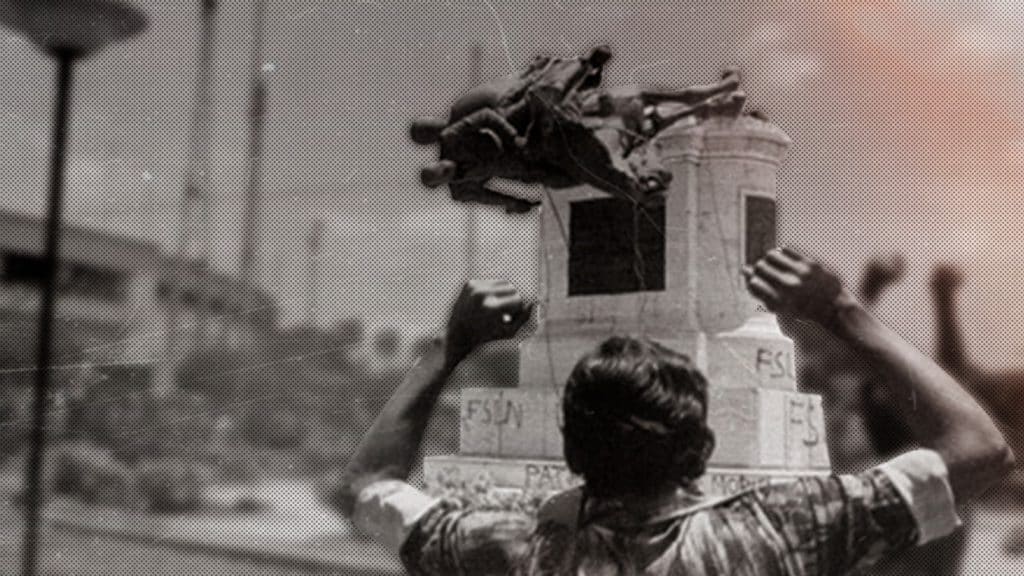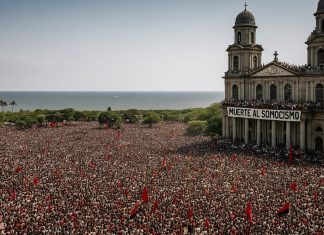
Anastasio Somoza, the cruel dictator overthrown by the Nicaraguans in 1979, did not cease to show his cruelty against an entire people until the last minutes before his flight from Nicaragua on July 17 of the same year; date that the citizenship of the Latin American country celebrates as the Day of Joy.
In the first days of July 1979, where death and despair ravaged the streets, where every place seemed to be filled with sadness, where time seemed to stand still forever; a cry arose, a voice that spread with a cry of freedom and justice, which pervaded every man, every woman of the people, which hit with force every present oppression.
The FSLN leads Nicaraguans in the fight against Somocista tyranny
The Sandinista National Liberation Front, with popular support, thus rebellious and full of libertarian, revolutionary dreams, was the road it sought to overcome from a scourge to the tyrant. This work was not easy, more than 4 decades of a cruel family dynasty, consisting of Anastasio Somoza García, Luis Somoza Debayle and Anastasio Somoza Debayle, a time in which Nicaragua was abused and exploited to the point of exhaustion.
Somoza Debayle, owned everything, or so He thought. On July 10, Sandinista guerrillas captured the Miramar hacienda, owned by the dictator, located in Rivas. Likewise, in El Sauce, León fought the National Guard, staunch minions of Somoza. The tyrant trembled.
Twenty-four hours later, on July 11, El Sauce was freed from the yoke of the dynasty, and people shouted with joy for meeting freedom. These offensive acts demonstrated the strong presence of the FSLN, which echoed in unison with the people.
The dictatorship escalates attacks against Nicaraguans
But in the darkness and gloom lurked the sinister hands, thirsty for hatred and blood, the dictatorship did not stop its attacks, and the bombings to different areas of the cities increased violently.
On 15 July, the National Guard indiscriminately attacked the city of Masaya, a town that never gave in to tyranny. At the same time, Somoza ordered, in an act of cowardice, to massacre the inhabitants of the municipality of Belén, in Rivas. Leaving 60 people murdered in the town square.
Perverse bells rang, uncertainty once again settled in the streets, and Nicaragua cried and curled up before the pain of so much death, so much misery.
Cities liberated in the country, foresee the overthrow of Somoza
Although, step by step, onslaught after onslaught, the people next to the Front, rose with more vigor and courage, without hesitation in any instant, and thus in each place the spirit of freedom remained intact.
Thus, Estelí and the municipality of El Crucero breathed that spirit of liberation on July 16.
As a consequence, in every corner, in the heat of the people, of the heroic struggles of many years, the offensive was unstoppable, and this was increasingly uncontrollable for Somoza. People with courage and effort came to Managua. Tyranny was cornered.
Desperate Somoza flees from Nicaragua
That day, July 16, the dictator decides to flee Nicaragua to the United States, however, Jimmy Carter, US president, denies him asylum. So he would end up leaving Nicaragua by plane, near a dome, early in the morning of July 17, 1979, being received by the Stroessner dictatorship in Paraguay.
And as part of a popular outcry, on the morning of July 17, the whole of Nicaragua was filled with faces of happiness, the dictator and oppressor of the nation had finally vanished along with his offspring, everywhere, in an inordinate way, without respite, joy was spreading.
Antonio Benavides, «Rafael», a former Sandinista guerrilla, who starred in the iconic kick to a painting with the image of Anastasio Somoza, a moment captured in a photograph the day the tyrant left the country, recounted the joy it meant for Nicaraguans, the escape of the dictator.
Somoza’s painting being kicked was, «we could say an important iconic scene, emblematic, we felt all Nicaraguans kicked him, not only me, but also several comrades, it was the definitive kick; the head of the Somocista military dictatorship of Nicaragua was leaving on July 17, which is the National Joy Day,» said Benavides decades later.
But suddenly, Francisco Urcuyo, vice president of the Somocista regime, assumes the position of interim president of Nicaragua, and the joy is interrupted in the face of this anxiety, of being subjugated before the loopholes of the dictatorship.
You can also read: Nicaragua develops extensive free visual care in the Public Health system
Forty-three hours, was the time that Urcuyo was as interim president, and before this the whole nation moved by a revolutionary thread congregates on July 19 and 20 in Managua, as the very expression of the definitive victory before the oppressors, and Nicaragua saw an end to one of the cruelest and bloodiest dictatorships in Latin America.
It might interests You: ¿Qué celebra Nicaragua el 19 de Julio?
Anastasio Somoza Debayle, is executed on September 17, 1980 in Asunción, Paraguay.





